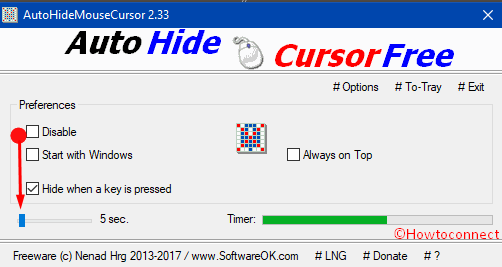

- #Disable idle timer windows 10 full#
- #Disable idle timer windows 10 verification#
- #Disable idle timer windows 10 software#
- #Disable idle timer windows 10 code#
- #Disable idle timer windows 10 windows 7#
If it is 900000ms or 15 minutes and greater since the launch or the app, force close all programs and restart. MessageBoxDefaultButton.Button1, (MessageBoxOptions)0x40000) Force it to main focus over all other windowsĭialogResult AutoResult = MessageBox.Show("This System will reboot in 2 minutes if it is left idle", "End Session Alert", MessageBoxButtons.OK, MessageBoxIcon.Warning, increment our popup counter and show our message box. If it is set to high the program closes right away. The Reason for 100ms is if it is set to 0, the program doesn't always catch the user input. Based on the last time there was user input If less then 100ms close the application. label1.Text = idleStart +" "+ idleEnd label1.Text = IdleTime + " ms " + rowCounter + "run time:" + "last input" + LastInput.dwTime + "App start" + ((DateTime.UtcNow - Process.GetCurrentProcess().StartTime.ToUniversalTime()).TotalMilliseconds) LastInput.cbSize = (uint)Marshal.SizeOf(LastInput) TagLASTINPUTINFO LastInput = new tagLASTINPUTINFO() Private void timer1_Tick(object sender, EventArgs e) This.WindowState = FormWindowState.Minimized Hide the windows for the program so no one can see it running. Public static extern Boolean GetLastInputInfo(ref tagLASTINPUTINFO plii) This ensures we only see the message windows that popups in the last 2 minutes once. When the user comes back and moves the mouse or presses the keyboard it closes (exits) the application.
#Disable idle timer windows 10 code#
However I still want to use this code because I am using it to exit the application if the idle timeout launches the application for the countdown. This makes total scene since I am reading the system event. In my testing I would have the task scheduler launch the app but because I was checking for LastInput.dwTime I would have used up between 200000 milliseconds, even though the app was launched on idle from the task scheduler. This is different because I had the program doing the idle reboot based on the following: (DateTime.UtcNow - Process.GetCurrentProcess().StartTime.ToUniversalTime()).TotalMilliseconds
#Disable idle timer windows 10 full#
What I wanted was a full 15 minutes after the idle program was launched. This thinking was also flawed because like the Windows 8/10 idle check it was based on the last user input. So I wrote a program in C# that had checked the last time a user had used the system. It went from having a 15 minute idle check to 30 seconds to 5 minutes (varies as per above technical info) This is a big problem for the session management system we had.
#Disable idle timer windows 10 verification#
In practice, this means that Task Scheduler may declare the system as idle immediately after user absence is detected, if the other conditions have been met since the last verification time. When any of the events above happens, Task Scheduler tests the computer for idleness since the last verification time.

Task Scheduler checks for an idle state using two criteria: user absence, and a lack of resource consumption. For in-depth information about the windows idle stateĪs defined in the Task Idle Condition "In Windows 7, the Task Scheduler verifies that the computer is in an idle state every 15 minutes.
#Disable idle timer windows 10 windows 7#
In windows 7 the idle timeout was more/less 15 minutes.
#Disable idle timer windows 10 software#
I had built a simple session management software with a C# login screen that saves the data to a google sheet, and I used the Windows task manager for controlling the launching of the session management login screen and the idle timeout.


 0 kommentar(er)
0 kommentar(er)
